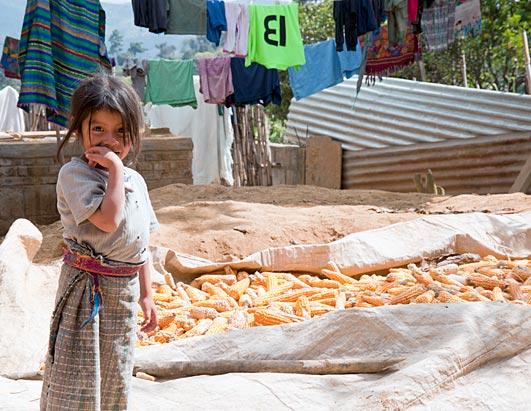ABC News Article - Another Face of Hunger: Malnutrition and Stunting in Guatemala
Amidst the lush landscape and breathtaking natural beauty of Guatemala, more than half the population lives below the poverty line and suffers from chronic malnutrition. In fact, Guatemala has the highest rate of malnutrition in the Western Hemisphere: 50 percent of the population is stunted and, in rural Mayan villages, that figure gets as high as 80 percent.

The main cause of stunted growth, experts say, is lack of vital nutrients during the first thousand days of life, that critical period of development from conception to age 2.
"The most incredible thing about stunting in Guatemala is how completely total an experience it is for rural communities. All children are at least six or eight inches shorter than they should be," said Peter Rohloff, an American doctor who runs Wuqu' Kawoq, a group of medical clinics in rural Guatemala. "In a family that's extremely impoverished, you will see very extreme cases of chronic stunting where children who are twelve years old, look that they're -- as if they were four or five. "
But stunting is not just about height. With malnourishment comes greater susceptibility to disease and infection, impaired cognitive function and even lower IQ. Stunted kids are more likely to drop out of school and grow up to be unskilled workers with little potential for economic success later in life.
"If you want to break the cycle of poverty in Guatemala this is how you do it: Feed kids and feed them early before they get malnourished," Rohloff said.
 Because a typical Mayan diet is lacking in animal protein like milk, Rohloff encourages mothers to breast feed but also to give their babies supplementary food starting at six months. He teaches mothers how to use Incaparina, a locally made corn gruel fortified with vitamins and minerals that needs to be mixed with just the right amount of water.
Because a typical Mayan diet is lacking in animal protein like milk, Rohloff encourages mothers to breast feed but also to give their babies supplementary food starting at six months. He teaches mothers how to use Incaparina, a locally made corn gruel fortified with vitamins and minerals that needs to be mixed with just the right amount of water.The mixture will be useless or even harmful if it is too diluted or the water contaminated. There are better supplements that need no preparation, Rohloff said, like Plumpy Doz, a ready-to-use sugary peanut paste with milk powder and vitamins. Unfortunately, there is no local Plumpy Doz manufacturer and getting the product shipped in can be problematic and expensive.
For nutritional intervention to be most effective, he said, it has to be done before the age of two. "Unfortunately, most programs in Guatemala are geared to school-aged kids but by the time they get to school it's too late," he said....
You can go to HERE to read the rest of the story and view the video that goes along with it.
No comments:
Post a Comment